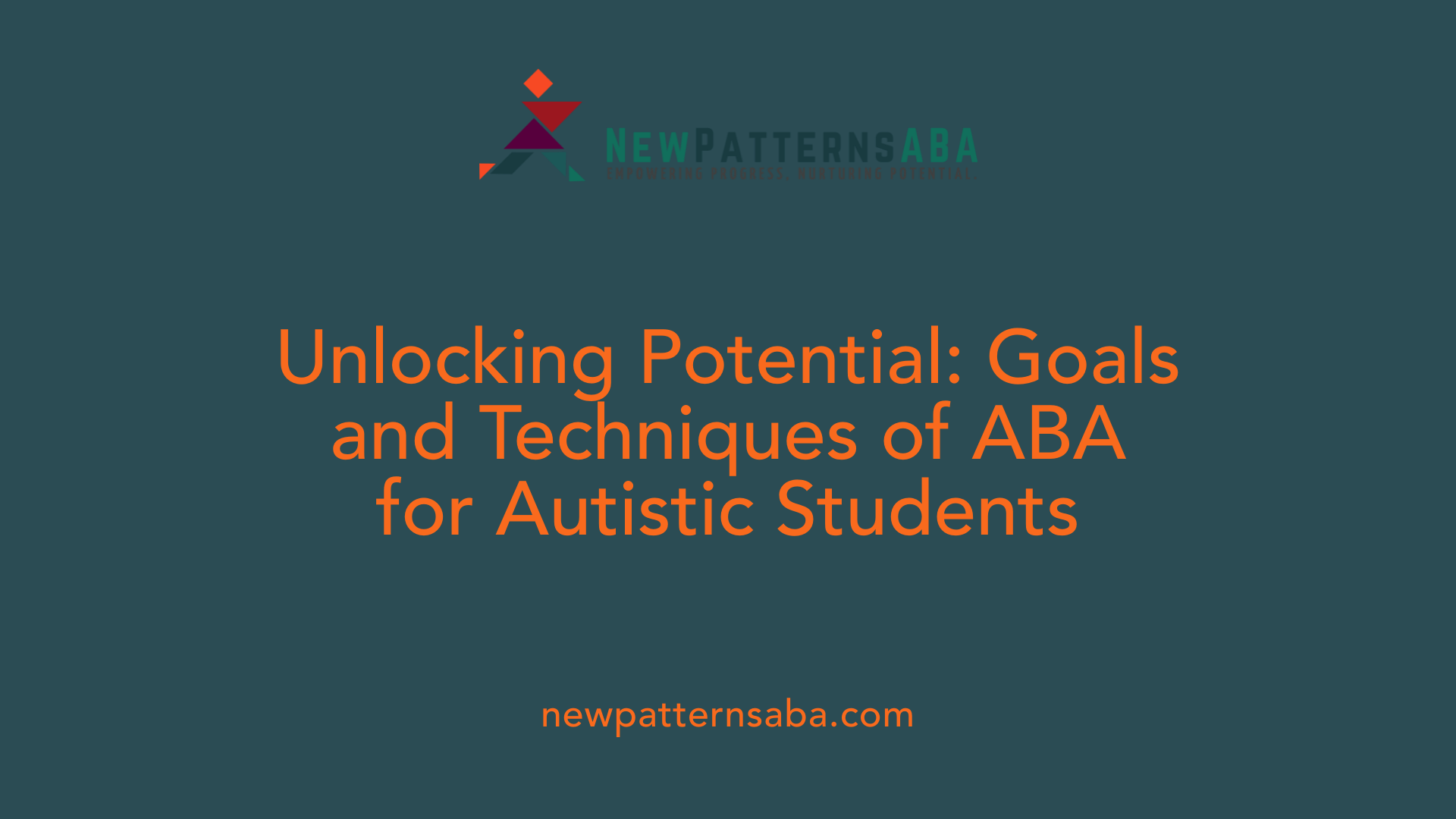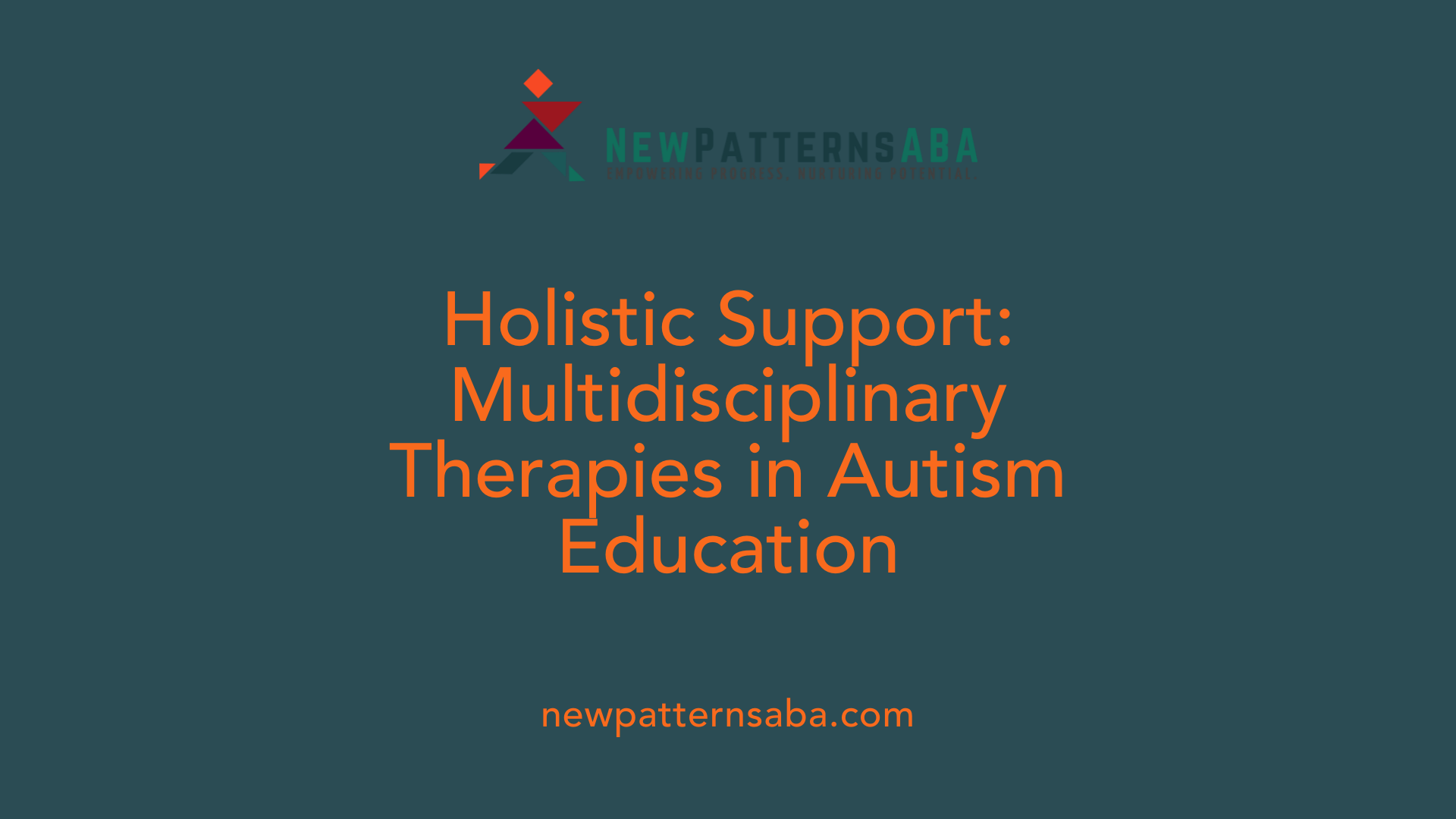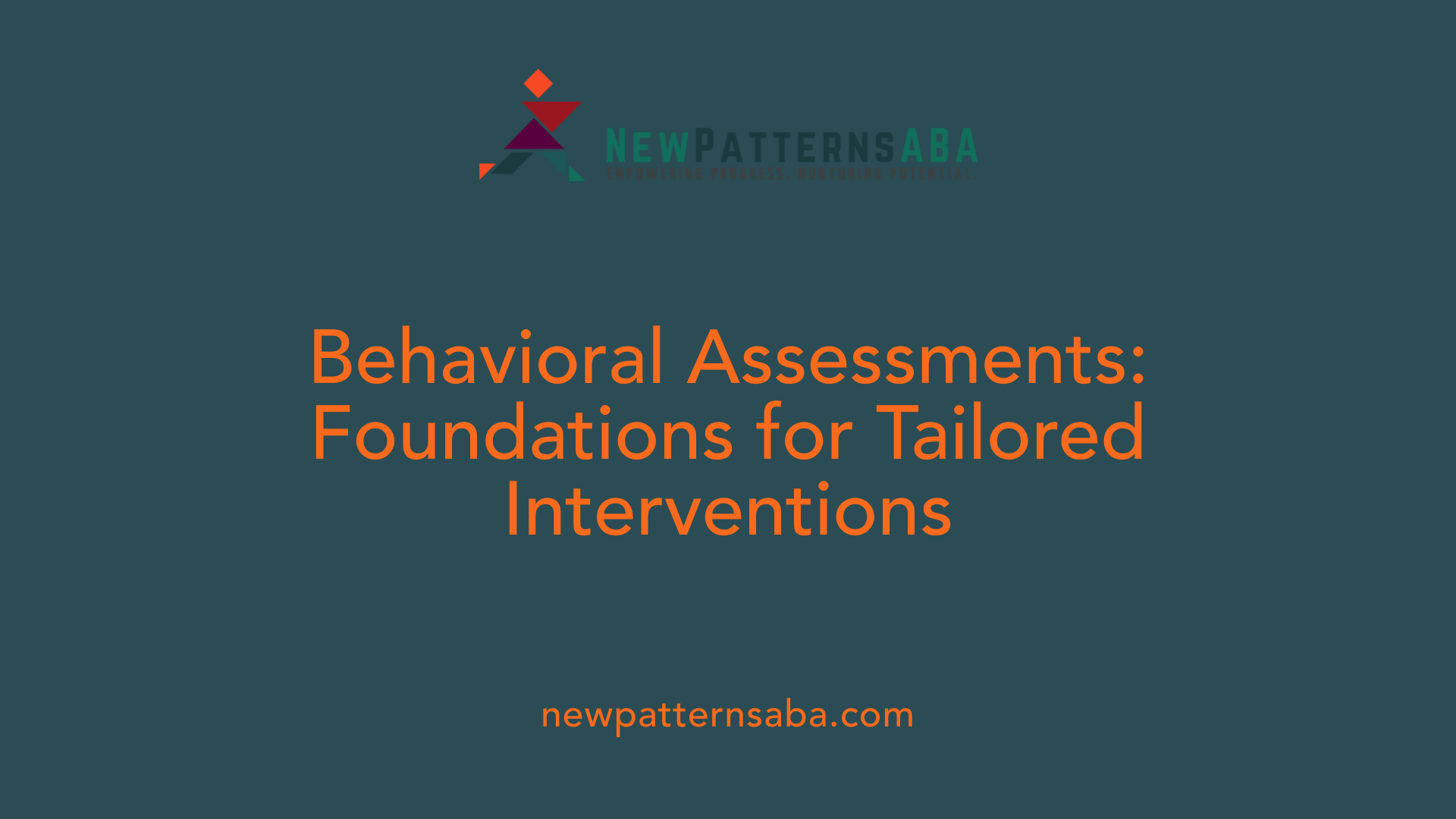Understanding the Importance of Personalized Plans for Autistic Students
Personalized learning plans are essential for addressing the unique needs of autistic students. Autism spectrum disorders present diverse challenges including social communication differences, behavioral issues, and co-occurring conditions. Developing effective educational strategies requires a multidisciplinary approach, integrating evidence-based therapies and behavioral supports to foster skill development, independence, and well-being. This article explores how educators and professionals can create tailored learning plans that empower autistic students to thrive in academic and social environments.
What is Applied Behavior Analysis (ABA) and Its Role in Personalized Learning Plans?

What is Applied Behavior Analysis (ABA) therapy and how is it used to support individuals with autism?
Applied Behavior Analysis (ABA) therapy is a science-based intervention focused on understanding and improving behaviors through careful study of a child's functional challenges. ABA uses methods such as positive reinforcement to encourage desired behaviors and reduce inappropriate ones, aiming to enhance communication, social skills, daily living, and academic abilities.
ABA's approach involves creating structured, personalized plans tailored to each child's unique needs. Complex skills are broken down into smaller, manageable steps, with ongoing data collection to monitor progress. This tailored focus helps autistic individuals develop adaptive skills and improve their overall functioning.
Who provides Applied Behavior Analysis therapy?
ABA therapy is delivered by trained and licensed professionals specializing in behavior analysis. This includes Board Certified Behavior Analysts (BCBAs), Board Certified Assistant Behavior Analysts (BCaBAs), and licensed behavior therapists. Many therapists work under supervision to ensure quality and effectiveness.
ABA therapy settings vary, including homes, schools, and community centers. Services are adjusted based on individual needs and often involve intensive hours to maximize outcomes.
How is ABA customized to individual needs?
Each ABA program is meticulously designed after assessing the child's specific behaviors and challenges. Goals target improving functional skills and reducing behaviors that may interfere with learning or social interaction. The highly personalized nature of ABA allows for adapting strategies as the child progresses.
Where is ABA therapy typically provided?
ABA therapy can take place in various environments such as:
- Home: Comfortable and familiar setting for consistent therapeutic support.
- Schools: Integrating ABA into educational programs helps with learning and socialization.
- Community: Practical skill-building in real-life settings promotes generalization of skills.
These diverse settings ensure comprehensive support tailored to the individual's daily life context.
| Aspect | Details | Importance |
|---|---|---|
| Definition | Science-based behavioral intervention focusing on understanding and improving behavior | Foundation for creating effective, personalized behavioral plans |
| Goals | Improve communication, social skills, adaptive and academic abilities | Enhances independence and quality of life |
| Providers | BCBAs, BCaBAs, licensed behavior therapists | Ensures specialized, effective therapy delivery |
| Settings | Home, school, community | Supports generalization of learned skills across environments |
| Customization | Individualized plans based on detailed assessment and data monitoring | Addresses unique needs and promotes continuous progress |
Primary Goals and Techniques Used in ABA for Autistic Students

What are the primary goals of ABA therapy for individuals with autism?
ABA therapy aims to improve critical skills such as communication, social interaction, daily living, and academics while reducing harmful or inappropriate behaviors. It focuses on teaching behaviors that matter in everyday life using tailored, measurable goals broken into small steps. Therapists closely monitor progress through data collection to adapt strategies, ensuring the therapy effectively supports each child's independence and quality of life.
What are some common techniques used in ABA therapy?
ABA employs a variety of evidence-based methods including Discrete Trial Training (DTT), natural environment teaching, task analysis, prompting with fading, and positive reinforcement. These techniques encourage desirable behaviors by rewarding children with praise or preferred items. Other strategies include modeling, behavior chaining, extinction, redirection, social scripting, and visual supports like pictures or videos. Each technique is customized based on individual needs to develop meaningful social, communication, and adaptive skills.
How are behavioral goals measured and monitored in ABA?
Goals in ABA are set to be specific and measurable. Therapists use ongoing data collection—tracking how often and how well behaviors occur—to evaluate progress. This data-driven approach helps identify when to adjust interventions and supports long-term success by ensuring goals address important challenges and strengths.
How are ABA goals integrated into Individual Education Plans (IEPs)?
ABA behavioral goals can be incorporated directly into IEPs, especially when targeting social communication deficits or behavioral challenges. Such goals often include teaching self-regulation, initiating tasks, managing conflicts, and requesting breaks, with clear criteria and progress tracking methods. For mild behaviors, goals may be set without formal functional behavioral assessments (FBA), but for more severe issues, FBAs guide precise intervention planning. This integration creates a structured plan aligning therapy objectives with educational settings for better support.
| Aspect | Description | Purpose |
|---|---|---|
| Behavioral Goals | Specific, measurable objectives targeting communication, social skills, and adaptive behaviors | Guide focused interventions and track progress |
| Common Techniques | DTT, naturalistic teaching, prompting, positive reinforcement, modeling, extinction | Teach and reinforce functional skills |
| Measurement Methods | Data collection on frequency, duration, and quality of targeted behaviors | Monitor effectiveness and guide adjustments |
| IEP Integration | Incorporate behavioral goals with clear objectives and monitoring into educational plans | Align therapy with academic and social learning goals |
Incorporating Multidisciplinary Therapies into Personalized Learning Plans

How does speech and language therapy benefit children with autism?
Speech and language therapy plays a vital role in enhancing both speech patterns and language comprehension. This therapy supports autistic children in improving their ability to express themselves and understand others, which is foundational for building relationships and engaging in social interactions.
What role does occupational therapy play?
Occupational therapy addresses challenges that autistic children face with adaptive skills and daily activities, such as handwriting or self-care tasks. By focusing on skills needed for everyday independence, occupational therapy helps children gain confidence and participate more fully in school and home environments.
How does social skills training help?
Social skills training, provided either in group or individual settings, assists autistic children in navigating complex social situations. This training improves social communication and interaction capabilities, helping them build meaningful peer relationships and reduce social isolation.
Why is parent management training important?
Parent management training equips parents with techniques to respond effectively to problematic behaviors and encourage positive behaviors in their children. It also often includes support groups to help families manage the stressors associated with raising autistic children, fostering a supportive home environment that complements school-based interventions.
Integrating these therapies into a child's Individual Education Plan (IEP) creates a well-rounded, multidisciplinary support system tailored to individual needs. This comprehensive approach promotes greater skill development, behavioral improvements, and overall quality of life.
Addressing Communication Differences and Social Skills Challenges in Autism

Communication Styles and Differences in Autism
Autistic individuals often have distinct communication styles that may differ significantly from those of non-autistic people. These differences are a core characteristic of autism and include a preference for spending time alone or working independently, usage of direct or formal language, and challenges in interpreting body language and facial expressions. Speech development can also vary widely, with some autistic people being non-verbal or having limited speech.
The Double Empathy Problem
Research highlights the "double empathy problem," which explains that autistic individuals may understand and communicate more effectively with each other than with non-autistic people. This reveals that communication barriers arise not just from the autistic person but from mutual differences in social cognition and interaction styles between autistic and non-autistic people.
Social Communication and Interaction Challenges
Communication involves social interaction, language, non-verbal cues, and relationship-building. Autistic individuals often face challenges in these areas, which can lead to social rejection, anxiety, fatigue, low self-esteem, isolation, and difficulties in education and employment. These challenges may exacerbate mental health concerns.
Support Strategies and Alternative Communication Methods
Effective support focuses on reducing communication barriers tailored to the individual's goals. Speech and language therapy helps enhance language understanding and expression. Social skills training, through group or individual settings, builds abilities to navigate social situations. Intensive interaction approaches, social learning programs, and talking therapies are beneficial.
For non-verbal or limited speech users, augmentative and alternative communication (AAC) methods such as sign language, AAC devices, gestures, and writing provide vital communication options. Self-managed strategies include preparing for social events, taking breaks to reduce fatigue, engaging in online socializing, and connecting around shared interests. These approaches aim to empower autistic individuals to communicate comfortably and build meaningful social relationships.
Behavioral Assessments and Functional Behavioral Assessments (FBAs) in Planning

What is the Purpose of a Functional Behavioral Assessment (FBA)?
A Functional Behavioral Assessment (FBA) is a systematic process used to identify the underlying causes or functions of challenging behaviors exhibited by students, particularly those with autism. This helps educators and specialists develop interventions that address the root causes rather than just the symptoms. FBAs guide the creation of individualized behavior plans tailored to each student's unique needs.
When Should an FBA be Used?
FBAs are especially recommended when behaviors are intense, disruptive, or self-injurious. They become crucial if initial behavior interventions fail or when the behavior significantly interferes with the student’s learning process. In contrast, FBAs may not be necessary for mild or well-defined behaviors that do not disrupt learning, especially if sufficient existing data is available.
How Does an FBA Support Behavior Goal Development?
By identifying why a behavior occurs, FBAs allow educators to pinpoint triggers and functions—such as seeking attention or avoiding tasks. This understanding is essential to crafting effective and measurable behavior goals. Without an FBA, goals might only tackle behaviors superficially without addressing their real purpose, limiting the success of interventions.
What Alternatives Exist When an FBA is Not Conducted?
When FBAs are not performed, behavior goals can still be included in Individual Education Plans (IEPs) under specific conditions such as mild behaviors or when ample data already exists. Additionally, behavior support plans may be incorporated through 504 plans or informal school programs. However, these alternatives may lack the comprehensive insights provided by a formal FBA, potentially impacting the effectiveness of behavior management strategies.
Implementing Evidence-Based Practices for Autism in Schools

What Are the AFIRM Modules and Their Purpose?
The AFIRM modules are a series of structured training materials designed to help educators and professionals learn how to implement evidence-based practices (EBPs) for students on the autism spectrum from birth up to 22 years old. Developed by a reputable academic institution, these modules cover essential topics such as social communication, repetitive behaviors, and learning supports.
Which Evidence-Based Behavioral Interventions Are Included?
The modules focus on several key behavioral interventions widely recognized in autism education, including:
- Antecedent-Based Interventions (ABI): Strategies to prevent challenging behaviors before they occur.
- Differential Reinforcement: Reinforcing desirable behaviors while reducing unwanted ones.
- Discrete Trial Training (DTT): Structured teaching methods to develop specific skills.
- Functional Behavioral Assessment (FBA): Identifying causes of behaviors to tailor interventions.
- Functional Communication Training (FCT): Teaching communication alternatives to problem behaviors.
Supplemental practices such as Picture Exchange Communication System (PECS), Pivotal Response Training, and Structured Play Groups are also emphasized.
How Is Augmentative and Alternative Communication (AAC) Used?
AAC is highlighted as a critical support for students who are non-verbal or have limited speech. AFIRM modules provide guidance on implementing AAC devices, sign language, gestures, or writing to enhance communication. This aligns with the understanding that communication differences are central to autism and require tailored support.
What Roles Do Paraeducators and Early Interventionists Play?
Specialized AFIRM modules cater to paraeducators working with elementary school students and early interventionists supporting toddlers and their families. These individuals receive targeted training to apply EBPs effectively in classroom and early developmental settings, ensuring interventions are age-appropriate and family-centered.
Through the use of these comprehensive, evidence-based modules, schools can foster inclusive, supportive environments that improve communication and behavioral outcomes for autistic students.
Goals and Legal Framework for Personalized Learning Plans

What are the distinctions between IEP and 504 Plans?
Individualized Education Plans (IEPs) and 504 Plans are both tools that provide educational support to autistic students but differ in scope and legal protections. IEPs are formal legal documents tailored to meet a child's unique educational needs under the Individuals with Disabilities Education Act (IDEA), often involving multidisciplinary assessments and detailed goals. In contrast, 504 Plans are broader accommodations under the Rehabilitation Act, designed to provide access to learning without the specialized instruction that IEPs mandate.
What are examples of adaptive behavior goals in personalized learning plans?
Adaptive behavior goals focus on improving everyday functional skills critical to success in school settings. Examples include:
- Managing and resolving conflicts independently.
- Demonstrating self-regulation consistently during classroom activities.
- Initiating academic tasks promptly.
- Requesting breaks appropriately when overwhelmed.
- Employing coping strategies during stressful situations. These goals are measurable, such as tracking the number of times a student self-regulates weekly or earns tokens for following classroom rules.
How do legal protections support educational accommodations?
Legal protections through IEPs and 504 Plans ensure that autistic students have access to necessary services and accommodations. Formalized behavior plans, sometimes developed alongside Functional Behavioral Assessments (FBAs), enhance personalized interventions. While behavior goals can be included without an FBA for mild issues, severe or disruptive behaviors require an FBA to identify underlying causes and create effective strategies. These protections promote inclusive, supportive educational environments that address both academic and behavioral needs.
What human rights and inclusion considerations are important?
Beyond educational law, human rights emphasize reducing stigma and promoting dignity, equality, and participation. Access to healthcare, education, and community involvement for autistic individuals aligns with rights-based frameworks. Strong advocacy encourages inclusive policies and environments that honor neurodiversity while ensuring safety and support, fostering well-being and social inclusion for autistic students.
Empowering Autistic Students Through Individualized Education
Creating personalized learning plans for autistic students is a dynamic and collaborative process that integrates behavioral analysis, multidisciplinary therapies, communication supports, and legal frameworks to address each learner's unique profile. By employing evidence-based practices such as ABA, social skills training, and speech therapy within tailored educational goals, educators help autistic students build vital skills for independence and social participation. Functional behavioral assessments provide critical insight for effective behavior interventions, while supports like AAC and parent involvement enrich learning experiences. Ultimately, personalized plans grounded in respect, scientific evidence, and human rights promote inclusion and ensure autistic students receive the resources and opportunities necessary to succeed both in and beyond the classroom.
References
- What Is Autism Spectrum Disorder?
- Autism and communication
- Modules – AFIRM
- Autism
- Behavior Goals for an IEP: 101 Examples incl. Adaptive ...
- The effectiveness of applied behavior analysis program ...
- The Controversy Around ABA
- Efficacy of Interventions Based on Applied Behavior ...
- 6 Benefits of ABA Therapy for Children with Autism





